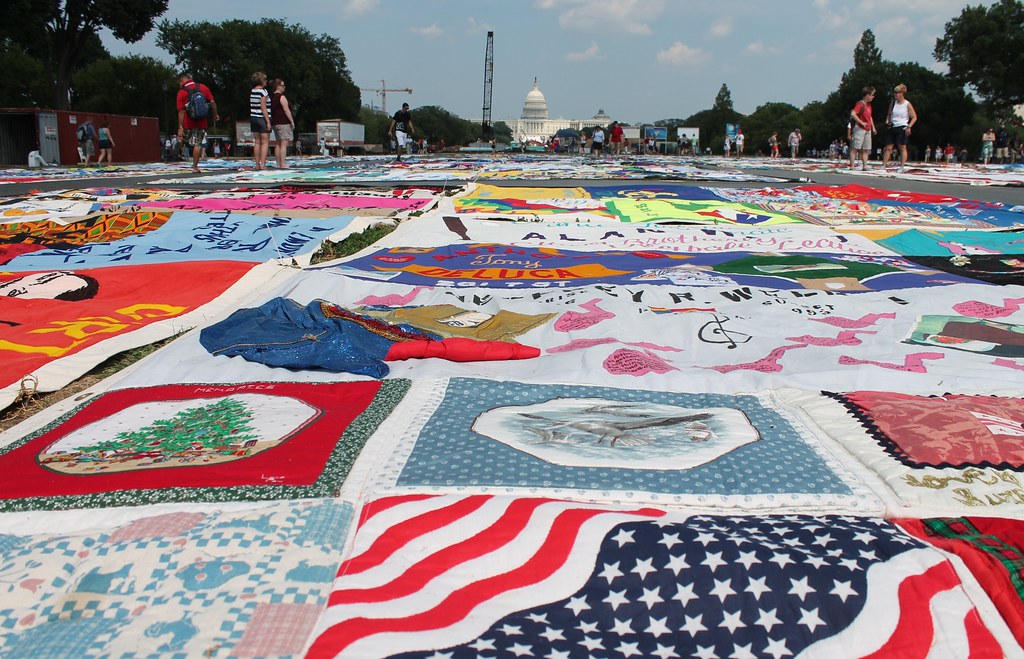The Radical Roots of Craftivism

The threads of history, activism, and creativity intertwine
Resistance through making dates back to ancient times.
In Homer's Odyssey (8th century BCE), Penelope unraveled her weaving each night to delay persistent suitors making her loom becoming a tool of subversion and autonomy. (As depicted here by in American silk embroidered with silk thread from 1886 by Dora Wheeler.)

The word "craftivism" may be new, but the idea runs deep through our history. Making things as resistance is a deeply held part of who we are as people.
Coined in 2003 by the incredible activist and communicator Betsy Greer, "craftivism" combined "craft" and "activism" to name what marginalized people had done for centuries.
During the American Revolution, women boycotted British textiles by spinning their own cloth. Suffragettes embroidered their demands for voting rights. The AIDS Memorial Quilt turned grief into visible protest.

These are handmade items. They are declarations.
Chilean women under Pinochet's dictatorship created arpilleras, appliquéd textiles showing disappearances and human rights abuses, that smuggled truth abroad when speaking out meant death. In apartheid South Africa, embroidered story cloths recorded Black experiences that official histories erased. During the Industrial Revolution, handwoven banners united diverse workers across factory floors.
Enslaved people encoded escape routes in quilt patterns. Indigenous communities kept cultural knowledge through weaving when their languages were banned. Labour movements create powerful banners that brought workers together. In the 1980s, the Greenham Common Women's Peace Camp covered military base fences with woven symbols of life and resistance to nuclear weapons. Palestinian tatreez embroidery patterns keep village identities after displacement, each mark an act of cultural remembrance.
The history of making IS the history of resistance.
MORE EXAMPLES FROM AROUND THE WORLD
- Hmong story cloths (paj ntaub) - documenting refugee experiences during and after the Vietnam War
- Afghan war rugs - incorporating military imagery to process conflict experiences
- The Ribbon Project (1985) - 15-mile fabric ribbon encircling the Pentagon in nuclear protest
- Japanese sashiko mending - originally practical technique became resistance to disposable culture
- Knitted pink "pussy hats" during 2017 Women's March
- Navajo weaving preserving cultural identity despite forced relocations
- Indian khadi movement - Gandhi's promotion of handspun cloth as resistance to British colonialism
- Revolutionary-era "Liberty caps" knitted as symbols of freedom
- Indonesian batik preserving cultural identity during Dutch colonialism
- Please add your examples to the comment section and I'll update this list!
FEATURE
Protest Banner Lending Library: Borrowing as an act of activism and building community
The Protest Banner Lending Library was created by artist Aram Han Sifuentes in Chicago after the 2016 election. This community-based project serves as both an archive and a resource for activists.

The library houses handmade textile banners created in workshops and by community members. These banners can be borrowed for free by anyone needing protest materials for demonstrations, marches, and actions.
What makes this project unique is its focus on providing protest materials to those who may face heightened risks when protesting, particularly undocumented immigrants and other vulnerable communities.
Beyond lending banners, the project hosts regular workshops where participants learn textile skills while creating new banners for the growing collection. These workshops serve as community gathering spaces where activism and craft intersect.
The library has expanded to satellite locations - permanent and ephemeral - and inspired similar initiatives in other cities. Its approach demonstrates how textile arts can create accessible pathways to political engagement while building community connections.
The project has been exhibited at the Chicago Cultural Center, Alphawood Gallery, and other venues, bringing attention to the intersection of craft, protest, and community organizing.
For more information, you can find Aram Han Sifuentes' official project documentation through their website.
Permanent locations:
- Aram Han Sifuentes' Studio l Chicago, USA
- University Galleries of Illinois State University l Normal IL, USA
- Tufts University Library l Boston, USA
- Yeyo Arts Collective l St. Louis, MO USA
- Canadian Filmmakers Distribution Centre l Toronto, Canada
- Leather Archives and Museum l Chicago, USA
- Print Room l Rotterdam, Netherlands
- YOUmedia, Harold Washington Library Center l Chicago, USA
- Thingstigate l Gothenburg, Sweden
- Routes l London, UK
CONTEMPORARY CRAFTIVISM EXAMPLES
Everyday people are using hands-on making as protest and community building right now:
Knitting Nannas Against Gas - Australian grandmothers who knit at fracking sites, creating yellow and black items during protests against fossil fuel extraction. Their "knit-ins" bring attention to environmental concerns through an unexpected medium.

Yarn Bombing Los Angeles - Guerrilla fiber artists who transform public spaces with colorful crochet installations addressing gentrification, housing rights, and community history.
Craftivism – Disability Studies Conference - Led by chronically ill and disabled crafters who create art addressing ableism, healthcare access, and disability rights.
The Craftivist Collective - Founded by Sarah Corbett, uses small, handmade items like tiny cross-stitched messages to engage politicians and corporations in conversations about labor rights and ethical production.
Social Justice Sewing Academy - Teaches young people from communities who have been marginalized to create quilt blocks that tell their stories and experiences with racism, violence, and inequality.
Yarn Mission - Black-led knitting collective focused on creating spaces for Black people to learn yarn crafts while organizing against police brutality.
Tiny Pricks Project - Started by Diana Weymar, documents harmful public statements by politicians through traditional embroidery and needlework on domestic textiles.
Welcome Blanket - Initiated by Jayna Zweiman as a response to anti-immigration policies, invites crafters to make blankets for refugees and immigrants with personal notes.
Tempestry Project - Uses knitting and crochet to create visual representations of climate data, with each row representing temperature data for a specific day.
Please add your work, organization or links to other craftivism projects to the comment section and I'll update this list!